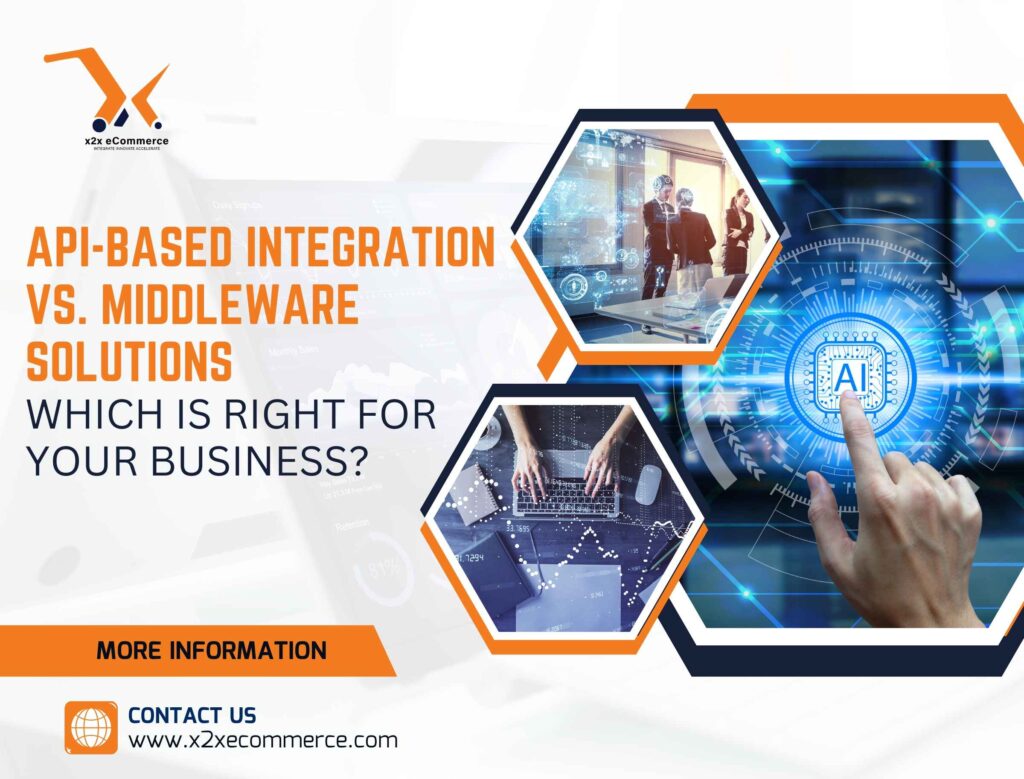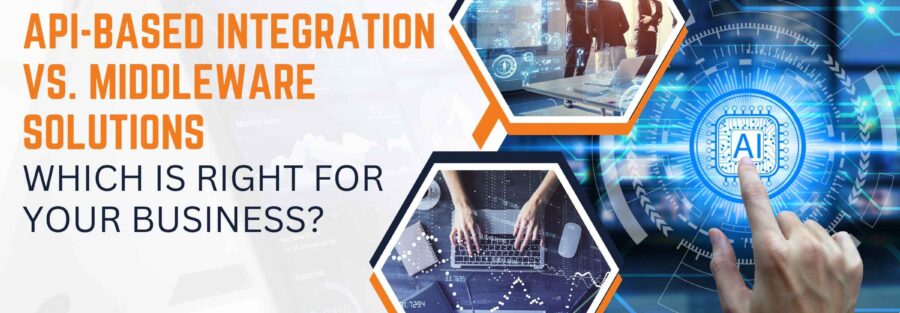
Integration isn’t a nicety in the new digital age, it’s a requirement. When companies use best-of-breed applications to operate from CRM to financials to eCommerce, the issue is getting those applications to communicate with each other well and in a reliable manner. Two ways of accomplishing that are through API-based integration and through middleware solutions.
Both have advantages and disadvantages. So, how do you choose which one to implement in your company? Let’s keep it simple.
What is API-Based Integration?
API-based integration depends on Application Programming Interfaces (APIs), specific protocols enabling systems to communicate directly with one another.
For instance, an ERP system can have an API by which a third-party CRM can extract customer information or feed sales information in real time.
Pros:
- Real-Time Communication: APIs enable real-time data exchange, perfect for mission-critical operations.
- Flexibility and Customization: Configure connections to your own business processes and data streams.
- Lightweight & Scalable: No heavyweight infrastructure; you create only what you require.
- Direct System-to-System: Fewer intermediaries = less complexity and latency.
Cons:
- Development Intensive: Needs experienced developers to develop, manage, and maintain the integration.
- Limited Standardization: Every API is unique, so connecting a pair of systems can become murky at the eleventh hour.
- Error Handling Can Be Complicated: APIs are less than generous with diagnostic information or retry operations.
What is Middleware?
Middleware is a computer program middle layer between applications and enables them to interact. It acts a little like a computer trafficking cop and interpreter.
It will usually manifest in the form of an Integration Platform as a Service (iPaaS), Enterprise Service Bus (ESB), or a set of specialist connectors linking several different systems.
Pros:
- Centralized Management: Look at all integrations in a single place.
- Pre-Installed Connectors: Most middleware includes built-in connectors to standard systems.
- Good Error Handling & Logging: Facilitates diagnostics, retries, and tracing of workflows.
- Best in Complex Environments: Especially useful for integrating older systems or defining multi-step processes.
Cons:
- Additional Cost: You’re paying for the platform and ongoing subscription fees.
- Potential Latency: Middleware can add a slight delay due to its intermediary nature.
- Overhead: Might be overkill for simple, one-to-one integrations.
Key Considerations When Choosing
| Criteria | API-Based Integration | Middleware |
| Speed | Real-time | Near real-time (with slight delay) |
| Complexity Workflows | Best for simple or custom integrations | Best for complex, multi-system |
| Scalability | Scalable, but needs developer input | Scalable with built-in orchestration |
| Maintenance | Requires internal resources | The vendor often handles platform updates |
| Cost | Lower upfront, higher dev cost | Higher upfront, less internal dev required |
When to Use What
Use API-based integration when:
- You possess a skilled development team.
- You have a minimal number of systems to integrate.
- You need low-overhead, real-time data synchronization.
Use middleware if:
- You have a large and complex environment.
- You need a central view and control.
- You need to save development effort using prebuilt connectors.
Closing Thoughts
There is no one integration to perform. API-based methods are fast and nimble, but technically more complex. Middleware makes the vision significantly easier to achieve, particularly for enterprises with high complexity levels, but at a price.
The key to making the best decision is to know your existing tech stack, team skillset, and ultimate integration objectives.
Having trouble choosing the correct method of integration for your company? Let’s discuss.




